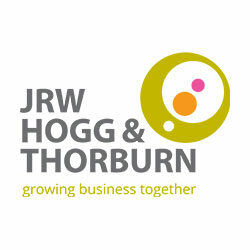Are you ready for SEISS checks?
You claimed a Self-Employment Income Support Scheme (SEISS) grant. Whilst it wasn’t too difficult to qualify, it is important to know that HMRC will be checking claims further down the line. What records will you need to back up your claim? Partner Brona MacDogall advises.
More information about record keeping for the Self-Employment Income Support Scheme (SEISS) was published in June – see our earlier article
There are two elements, The claim itself, and how Coronavirus affected your business.
Keeping records
HMRC says you must keep a copy of “all records in line with normal self-employment record keeping requirements including how much you have claimed from SEISS and your claim reference number.” The records must be kept for at least five years after the 31st January tax return deadline or, if later, four years after you send your tax return.
Remember to record the SEISS grant as part of your business income. Keep a copy of the SEISS calculation. This can be a screenshot of your online claim.
Effects of Coronavirus
Keeping details of your claim is simple enough but the second part of the record-keeping requirements is trickier. You must keep evidence of how your business was adversely affected by Coronavirus. The original guidance implied that once you made a claim, and as part of the process confirmed that your business was “adversely affected” by Coronavirus, that was the end of the matter.
But the latest guidance says you must have records which demonstrate the nature of the adverse effects to your business operations. What does this mean in practice?
What counts as evidence?
HMRC says that your evidence could include business accounts showing a reduction in turnover, confirmation of any Coronavirus related business loans you have received, dates your business had to close because of lockdown restrictions, and dates you or your staff couldn’t work because of Coronavirus symptoms, shielding or caring responsibilities because of school closures.
HMRC has published examples of what it thinks counts as “adversely affected”, such as having to “scale down or temporarily stop trading because your supply chain has been interrupted, you have fewer or no customers or clients, or your staff are unable to come into work”.
What to record
We would advise you to make a more detailed record of negative impacts.
This is not just what has happened but what you expected to happen were it not for the crisis. Think about your usual patterns of business and record what is different this year. Record additional expenses you have incurred in adjusting to remote working, additional expenses of rigorous cleaning and PPE for yourself, staff and customers. Record jobs you expected to be working on, or customers you expected to have. Record cancellations, or cases where work has been postponed. If you have regular clients, regular contracts, record what you would usually be doing, and what you would usually be charging but haven’t done because of the pandemic. Dates, names, addresses, usual charge-out rates and so forth all provide credibility.
Record pre-lockdown hours, customers and lost income to back up your claim. Collect evidence of how your business has changed now, in real time, before business gets going again, so you can be sure you get the facts correct.
CONCLUSION
As well as documents showing how you worked out your SEISS claim, HMRC requires you to keep records of how your business was adversely affected. Simply saying “we had less income” won’t be enough. List cancelled contracts and orders as well as indefinitely delayed work for regular customers. Make records now while the details are still fresh.
